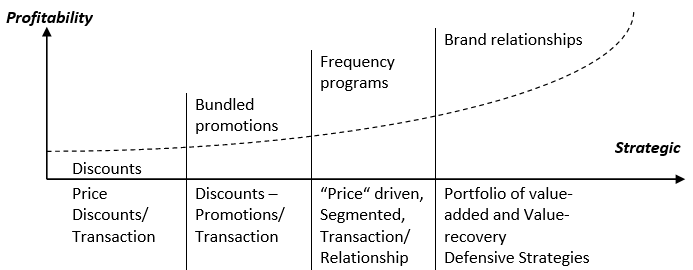Reviewing the literature on the relationship between loyal customers and profitability the view is split into two sides. However, both sides argue that it is more expensive to hunt and acquire new customers instead of focusing on the loyal ones. Zineldin (2000) suggests that, “It is more expensive to acquire new customers than holding onto old ones (which has been estimated to be a ratio of 1/5).” (Zineldin, 2000)
Nevertheless, there is also support for the opposite in literature i.e. by the author Werner Reinartz (2002) when he talks about his research ”These findings are based from mainly 3 different claims; the first one being that it costs less to serve loyal customers. This was found not to be true in the article as loyal customers expect something back in return for their loyalty. “ (Werner Reinartz, 2002)
One of the reasons that the link between loyalty and profits are weak has a lot to do with the crudeness of the methods that most companies currently use to decide whether or not to maintain their customer relationships.” (Werner Reinartz, 2002)
The other side argues that customer loyalty is not always profitable. In a study of Reinartz and Kumar (2002) they showed that from an annual investment of about $2 million, “About half of those customers who made regular purchases for at least 2 years – and were therefore designated as ‘loyal’ – barely generated profit.” (Werner Reinartz, 2002)
Reinartz could also conclude from the findings that “the relationship between loyalty and profitability is much weaker – and subtler – than most loyalty programs claim. Specifically, we discovered little or no evidence to suggest that customers who purchase steadily from a company over time are necessarily cheaper to serve, less price sensitive, or particularly effective to bring in new business.“ (Werner Reinartz, 2002)
The conclusion of the report and focus on the profitability part is “There is no one right way to make loyalty profitable. Different approaches will be more suitable for different business, depending on the profiles of their customers and the complexity of their distribution channels. The only way to strengthen the link between profits and loyalty is to manage both at the same time.” (Werner Reinartz, 2002)
There are always going to be different types of customers and to be able to cater, develop and discover the potential of these groups several different strategies are important. One way of looking at this is with the help of the defensive strategies model (Figure 2).

“As valuable as segmentation is, even more valuable is correct identification at individual level. Knowing that 60% of your customers are loyal customers is useless if you do not know which ones to court with what level of service“ (Werner Reinartz, 2002)
This brings focus to the strategic 4-field matrix suggested by (Werner Reinartz, 2002) that looks at how to evolve customers towards a deeper state of loyalty and identify which customers to focus on.
Reinartz also suggests that, “after analyzing your customers’ profitability and the projected duration of their relationships, you can place each of them into one of four categories, as in the matrix.” (Werner Reinartz, 2002) (Figure 3)” By then choosing the appropriate loyalty strategy you can evolve the relationship and reach a higher level of profitability.

When it comes to the different strategies in the matrix Reinartz (2002) in short suggest and describe the following approaches; (Werner Reinartz, 2002)